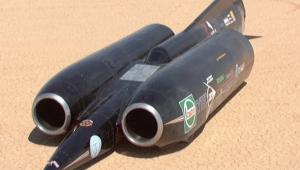I'd rather they sue the people make the bombs.
The Six Billion Dollar Earplugs

During my teaching career, for no particular reason, I would sometimes pose this dilemma to my class: Suppose a madman has locked you in a room. He demands that you declare your two most valued senses. Universally, the students specified sight and hearing. Then the madman gives you a terrible choice: he will take away either your sight, or your hearing. Only then will he set you free. What an impossible choice.
Each of us has our own answer, but the students consistently chose blindness over deafness. Many of them were musicians, so that might have biased their decision, but overall the reasoning was that deafness would be more isolating, and that is what the students feared the most. From my wholly unscientific survey, I concluded that of all the senses, hearing is the one we value the most highly. All of which brings us to the case of the six-billion-dollar earplugs.
We are all familiar with crappy foam earplugs. Among hearing-protection products, they are right up there with tissue paper stuffed in your ears. They are better than nothing, but over-ear earmuffs are a much better choice. However, in many instances, earplugs are the only viable option. For example, in a military setting, there are many loud noises, many of which could cause hearing damage, and earmuffs are impractical. What is needed is an inexpensive, disposable, convenient product to reliably limit loud sound levels — in other words, a good foam earplug.
The 3M Company endeavored to supply such a product. It entered the earplug business when in 2008 it purchased Aearo Technologies Inc., along with its patents and military contracts, for $1.2 billion. Aearo had developed innovative dual-sided earplugs with two modes. One side reduced all noise, and the other side protected against loud noises such as explosions while permitting speech to be understood. 3M sold “Combat Arms” earplugs to the U.S. military for issue to active-duty soldiers and other personnel. It was a small part of 3M’s business, but one that will cost it a tidy sum.
Coming back from deployment, many military veterans claimed that the earplugs were faulty; more specifically, they claimed that even though they used the earplugs, they suffered permanent hearing loss, tinnitus, and other hearing-related injuries. Among various issues, the plaintiffs claimed that the earplugs could imperceptibly loosen in the ear, decreasing or defeating their effectiveness. Soldiers are given an auditory exam when they enlist, and annually thereafter. The plaintiffs cited this database in making their claims that damage occurred. The case also included some consumers and members of law enforcement. In total, this was the largest mass tort in U.S. history, with more than 300,000 personal-injury claims.
Understandably, 3M had a different view, disputing claims of hearing loss caused by its product. 3M said that the earplugs are effective when used properly, and when the soldier is professionally trained. 3M disputed the data that purported to show undue hearing loss in users. Also, citing protections contained in a government contractor clause, 3M said that it can’t be held liable for manufacturing a product requested by the government. Moreover, 3M pointed out that the military continues to use newer versions of the product.
At issue are several questions: Are the earplugs faulty? If so, did 3M know they were faulty? Did the soldiers use them when necessary? Did the soldiers use them correctly? And if there is hearing damage, was it because of something related to the earplugs, or something else? And finally, if 3M is at fault, how much compensation is owed?
Fast forward through five years of litigation: The claims were consolidated to appear before a federal judge in Pensacola, Florida. The judge instructed the parties to seek a settlement. And last August, a settlement was reached in which 3M’s board agreed to pay $5 billion in cash and $1 billion in common stock between 2023 and 2029, with no admission of liability. Not a trivial amount, but some analysts were predicting a payout of $10 to $15 billion. A data point: 3M’s annual revenue for 2022 was about $34 billion. Two more data points: From the early 2000s to 2015, 3M sold about $32 million worth of earplugs to the military. Cost per pair: About $7.63. When you factor in the enormous cost of settlement, the cost per pair jumps to $4,194.
So, a madman has locked you in a room. Unless you pay him, he will take away your hearing. How much is your hearing worth to you? The staggering settlement in the 3M earplug case underscores not just the monumental financial repercussions for the company, but also brings to the forefront the invaluable nature of our senses.
Ken C. Pohlmann is an electrical engineer specializing in audio topics as a consultant and writer. He is Professor Emeritus at the University of Miami.
- Log in or register to post comments


ITIL Practice Questions are designed to assess an individual's understanding and proficiency in IT Service Management (ITSM) based on the ITIL (Information Technology Infrastructure Library) framework. The ITIL Practice Questions cover various aspects of ITIL, including its key concepts, processes, roles, and best practices for managing IT services effectively. They help practitioners and aspiring professionals prepare for ITIL certification exams or evaluate their knowledge in ITSM.



























































